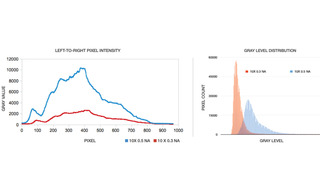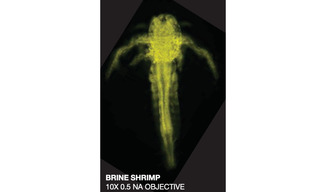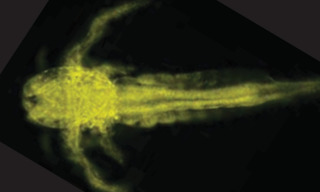It’s a well-known, yet often overlooked, fact. No component makes a bigger contribution to optical throughout in epi-fluorescence microscopy than the objective. To a large extent, this is because the optical path passes through the objective twice — once for excitation and again for emission detection. Doubling the numerical aperture (NA) of the objective with the same magnification increases the detected fluorescence intensity by a factor of 16. Although optimizing the optical throughput of a fluorescence microscope requires attention to many factors including light source output, light source coupling to the microscope, optical filtering and camera quantum efficiency, objective selection remains most important of all. For example, here is fluorescence image of a brine shrimp imaged with a 10X 0.5 NA objective. The two plots below the image are digital representations of the image data, showing the effect of switching to a 10X 0.3 NA objective with all other image acquisition parameters unchanged.
Learn more about our SPECTRA X Light Engine used in the figures below!






